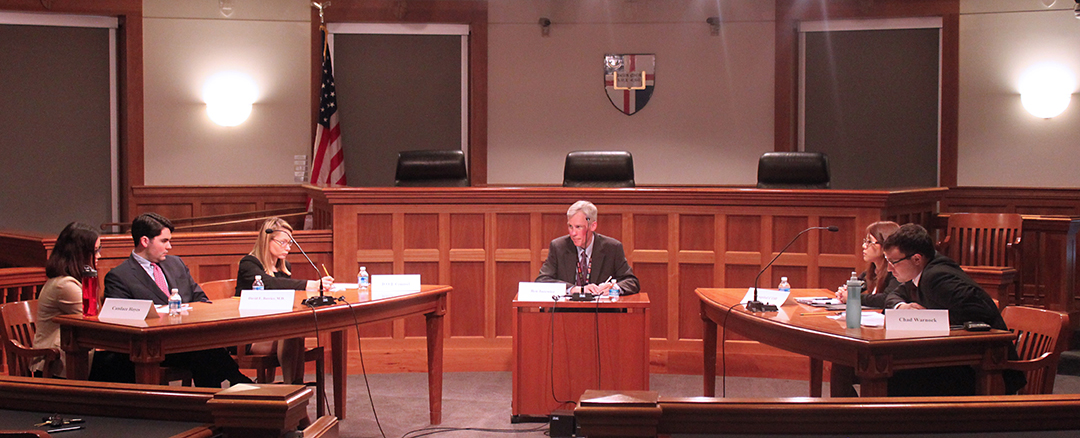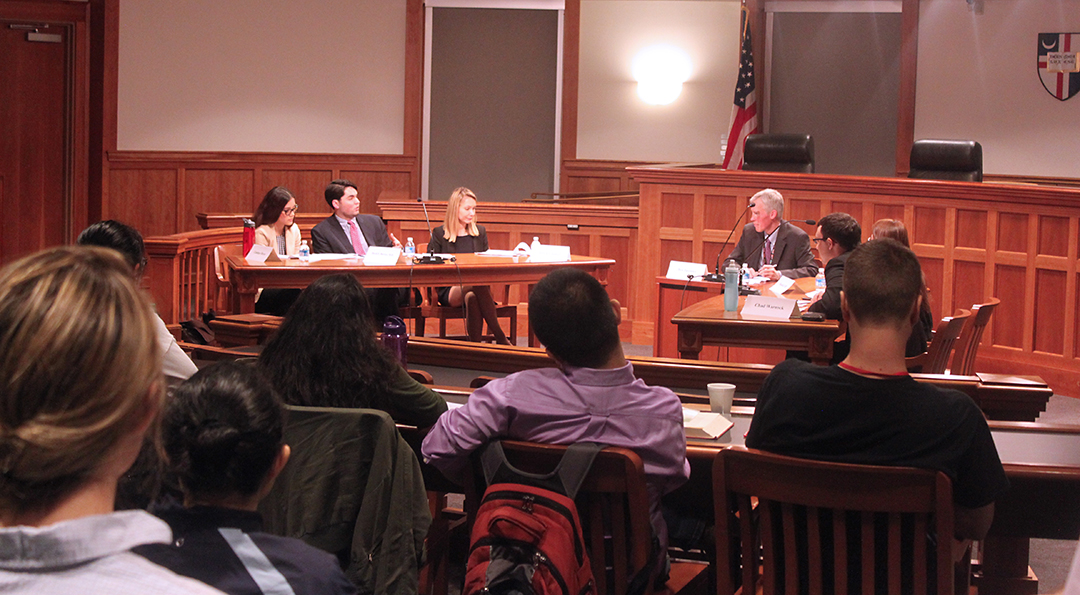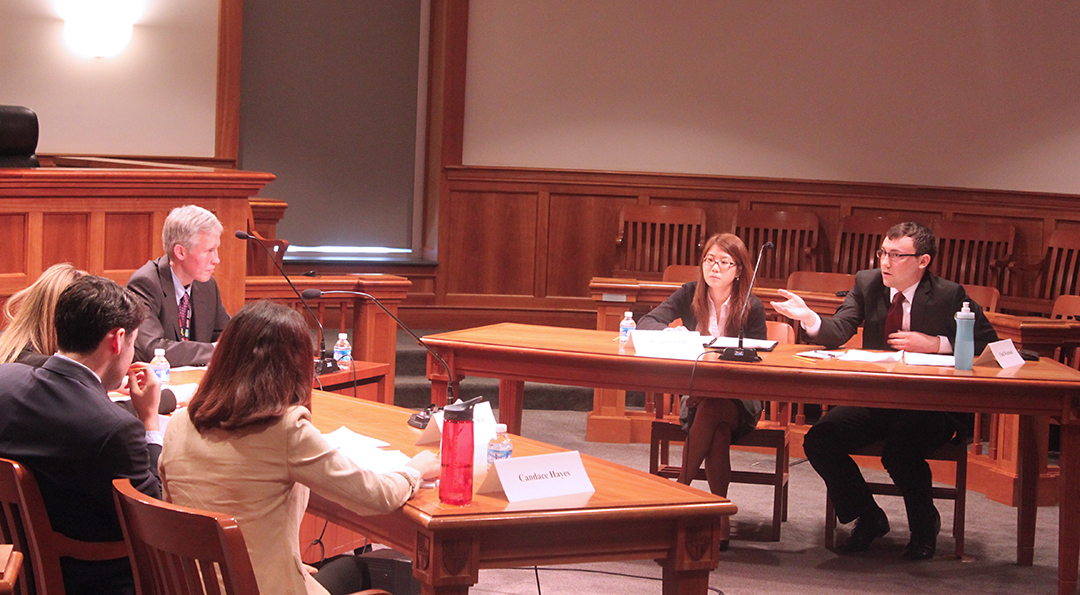
For the seventh year in a row, the eagerly anticipated conclusion to a fictitious legal case studied all semester by first-year Lawyering Skills Program students was staged in Slowinski Courtroom, bringing their classroom instruction to a realistic and fitting close.

U.S. ex. rel. David E. Barrier, M.D. v. Twin Oaks Hospital, Inc., is a case that sprang from the imagination of Clinical Associate Professor of Law A.G. Harmon, who has saddled his hapless Overland Park, Kansas hospital with myriad made up legal problems over the years to illustrate the possibilities and benefits of a negotiated settlement by a professional mediator. As in past years, Harmon wrote a lengthy, complex, and wholly believable backstory to his case, clearly framing the legal issues in play and populating the drama with fully human plaintiffs, defendants, and other actors who are often motivated by worries, petty foibles, personal dislikes, and other agendas known only to themselves. For 2015, Harmon placed Twin Oaks Hospital in the crosshairs as the object of a lawsuit by Dr. David Barrier (1L Will Lane), who brought the action after accusing the hospital of taking kickbacks from a contractor to whom it had awarded a lucrative deal staging health fairs. Barrier's case was dismissed by a lower court, but accepted on appeal by the U.S. Tenth Circuit.

During the April 20 teaching scenario, Barrier, his attorney Candace Hayes (1L Jackie Haughom) and counsel from the Department of Justice (1L Monika Ledlova) agreed to a mediation effort involving both parties in an effort to forestall further action by the courts. Representing Twin Oaks Hospital as chairman of the board was 1L Sarah Son, with her attorney Chad Warnock (1L Michael Marusak). As he has in past years, real life mediator Ben Jacewicz, assistant county attorney for Fairfax County, Va., generously donated his time and expertise to make the proceeding as true-to-life as possible. Over the course of an hour, the protagonists stuck to their scripts, staying in character and digging in their heels over their vehement demands, which carried the risk of the loss of millions in liabilities to the ultimate loser of the case.

As time went on, however, and aided by the gentle prodding of the mediator to explore common ground, the two sides eventually narrowed down their differences to the point where a realistic compromise was reached. The final agreement involved monetary compensation to Dr. Barrier in exchange for his publicly stated view that Twin Oaks Hospital had done nothing illegal after all. "Not every case that attempts the mediation route winds up succeeding, of course," noted Professor Harmon. "But I hope our students have learned that even contentious legal differences can be overcome to everyone's benefit if both parties are willing."
